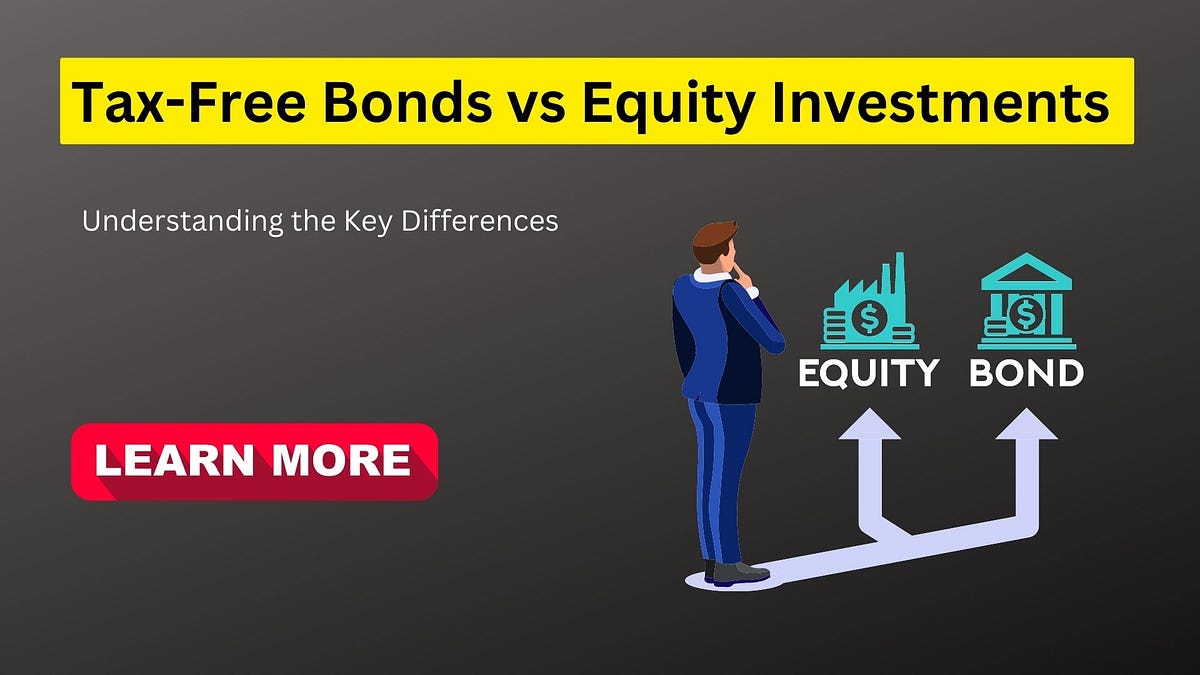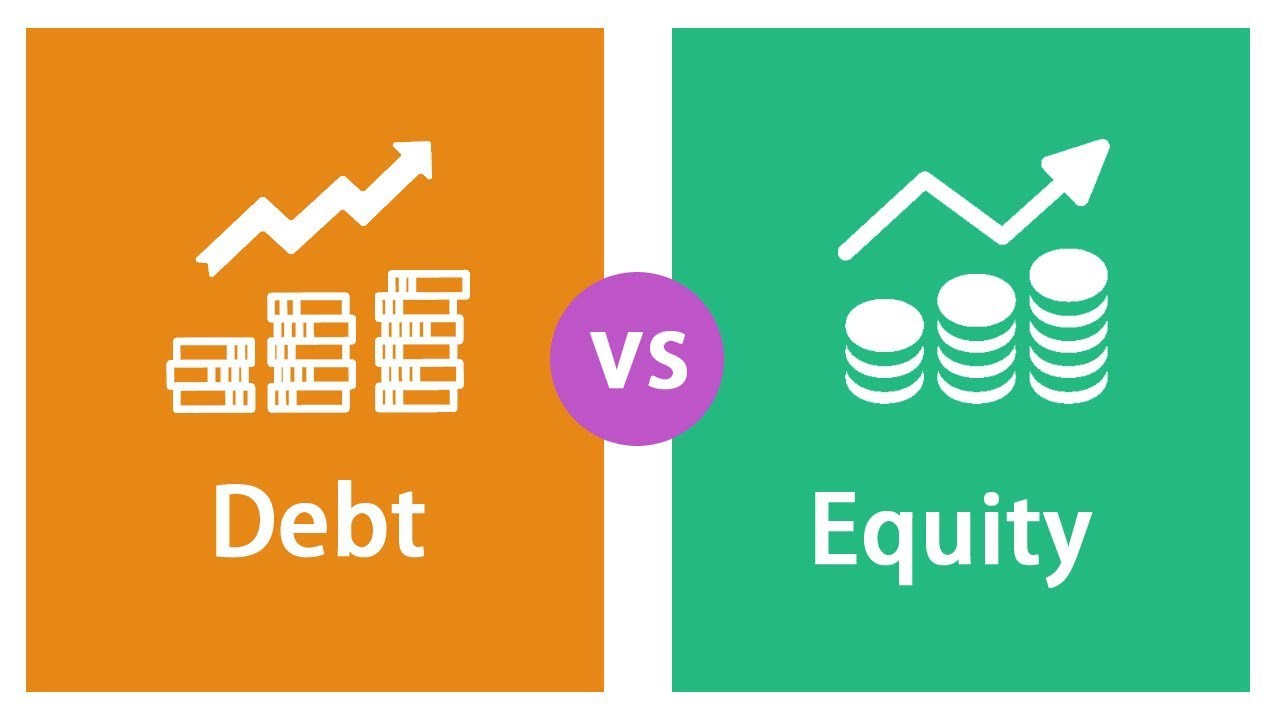Home>Finance>What Are The Key Differences Between Common Stock Preferred Stock And Corporate Bonds


Finance
What Are The Key Differences Between Common Stock Preferred Stock And Corporate Bonds
Published: October 14, 2023
Learn the key differences between common stock, preferred stock, and corporate bonds in the world of finance.
(Many of the links in this article redirect to a specific reviewed product. Your purchase of these products through affiliate links helps to generate commission for LiveWell, at no extra cost. Learn more)
Table of Contents
- Introduction
- Definition and Characteristics of Common Stock
- Definition and Characteristics of Preferred Stock
- Definition and Characteristics of Corporate Bonds
- Key Differences between Common Stock and Preferred Stock
- Key Differences between Common Stock and Corporate Bonds
- Key Differences between Preferred Stock and Corporate Bonds
- Conclusion
Introduction
When it comes to investing in the stock market or corporate bonds, it’s important to understand the various options available to investors. Common stock, preferred stock, and corporate bonds are three common investment instruments that offer different advantages and characteristics. Each of these options carries its own set of risks and rewards, and understanding their key differences is essential for making informed investment decisions.
Common stock represents ownership in a company and entitles stockholders to voting rights and a share of the company’s profits. Preferred stock, on the other hand, is a hybrid between common stock and corporate bonds, offering a fixed dividend payment and priority over common stockholders in the event of liquidation. Corporate bonds, also known as debt securities, are issued by companies to raise capital and promise periodic interest payments to bondholders.
In this article, we will delve into the definitions and characteristics of common stock, preferred stock, and corporate bonds. We will also explore the key differences between these investment options, giving you a comprehensive understanding of their unique features.
Definition and Characteristics of Common Stock
Common stock represents the basic form of ownership in a company. When you purchase common stock, you become a partial owner of the company and receive voting rights in the company’s affairs. As a common stockholder, you have the potential to benefit from the company’s success through capital appreciation and dividend payments.
Some key characteristics of common stock include:
- Voting rights: Common stockholders have the right to vote on important matters affecting the company, such as the election of board members and major corporate decisions.
- Dividend payments: Common stockholders may be eligible to receive dividends, which are a portion of the company’s profits distributed to shareholders. However, dividend payments are not guaranteed and can vary based on the company’s performance.
- Capital appreciation: Common stockholders have the opportunity to benefit from capital appreciation, which is the increase in the value of the stock over time. If the company performs well, the value of the common stock can rise, allowing shareholders to sell their shares at a profit.
- Risk exposure: Common stockholders are exposed to the risks associated with owning equity in a company. If the company faces financial difficulties or performs poorly, the value of the common stock can decrease, resulting in potential losses for shareholders.
It’s important to note that common stockholders are typically last in line to receive assets in the event of liquidation. This means that if a company goes bankrupt or is liquidated, common stockholders may not receive any remaining assets until the claims of debt holders and preferred stockholders are satisfied.
Common stock provides investors with the opportunity for ownership in a company and the potential for long-term growth. However, it also comes with a higher level of risk compared to other investment options. It is important for investors to carefully assess the company’s financial health, growth prospects, and industry trends before investing in common stock.
Definition and Characteristics of Preferred Stock
Preferred stock is a type of investment that combines features of both common stock and corporate bonds. It represents a higher claim on a company’s assets and earnings compared to common stockholders. Preferred stockholders enjoy certain advantages and privileges, which differentiate them from both common stockholders and bondholders.
Here are some key characteristics of preferred stock:
- Fixed dividend payments: Preferred stockholders are entitled to receive fixed dividends on a regular basis. Unlike common stockholders, who are not guaranteed dividends, preferred stockholders have a priority claim on the company’s profits and are typically paid before common stockholders.
- Preference in liquidation: In the event of liquidation or bankruptcy, preferred stockholders have a higher claim on the company’s assets compared to common stockholders. This means that preferred stockholders are more likely to receive a portion of their investment back before common stockholders.
- No voting rights: Unlike common stockholders, preferred stockholders usually do not have voting rights in the company. They do not have a say in major corporate decisions and rely on company management to make strategic choices.
- Lower risk than common stock: Preferred stock is considered less risky than common stock because of its fixed dividend payments and priority in liquidation. However, it is still riskier than corporate bonds, as the dividends are not guaranteed and the value of preferred stock can fluctuate with market conditions.
- Callable or convertible: Some preferred stocks may have additional features such as being callable or convertible. Callable preferred stocks can be redeemed by the company at a predetermined price, giving the company the option to repurchase the shares. Convertible preferred stocks can be exchanged for a predetermined number of common shares of the same company.
Preferred stock can be an attractive investment for investors looking for a combination of steady income and potential capital appreciation. It offers a fixed-income component through regular dividends while providing some potential for growth in stock value. However, it is important to consider the financial health of the issuing company, the terms of the preferred stock, and the overall market conditions before investing in preferred stock.
Definition and Characteristics of Corporate Bonds
Corporate bonds are debt securities issued by companies to raise capital for various purposes, such as financing expansion projects, acquisitions, or day-to-day operations. When investors purchase corporate bonds, they are essentially lending money to the issuing company in exchange for periodic interest payments and the repayment of the principal amount at maturity.
Here are some key characteristics of corporate bonds:
- Fixed interest payments: Corporate bonds pay a fixed rate of interest, also known as the coupon rate, to bondholders. This interest is usually paid semi-annually or annually, providing a predictable income stream for investors.
- Maturity date: Every corporate bond has a maturity date, which is the date on which the issuer must repay the principal amount borrowed. The maturity period can range from a few months to several years, depending on the terms of the bond.
- Seniority in liquidation: In the event of liquidation or bankruptcy, bondholders have a higher priority claim on the company’s assets compared to both common stockholders and preferred stockholders. This means that bondholders are usually the first to be repaid from the company’s remaining assets.
- Credit ratings: Corporate bonds are assigned credit ratings by independent credit rating agencies, which assess the issuer’s creditworthiness and ability to repay the bond. Higher-rated bonds are considered lower risk, while lower-rated bonds carry higher default risk.
- Fixed income investment: Corporate bonds are popular among income-focused investors as they provide a stable and predictable income stream through regular interest payments. Bondholders can rely on these fixed income payments regardless of the company’s stock performance.
- Market price fluctuations: The market price of corporate bonds can fluctuate based on changes in interest rates, the issuer’s financial health, and market conditions. If interest rates rise, the market price of existing bonds may fall, while declining interest rates can cause bond prices to rise.
Investing in corporate bonds can be an attractive option for investors looking for a more conservative investment compared to stocks. Bondholders have a contractual claim on the issuer’s assets and higher priority in repayment during liquidation. However, it is important to carefully assess the creditworthiness of the issuing company, consider the bond’s maturity and interest rate, and diversify investments across different issuers to manage risk effectively.
Key Differences between Common Stock and Preferred Stock
While both common stock and preferred stock are investment options in publicly traded companies, they differ in several important aspects. Here are the key differences between common stock and preferred stock:
- Voting rights: Common stockholders have voting rights in the company, allowing them to participate in decision-making processes and elect the board of directors. Preferred stockholders, on the other hand, generally do not have voting rights and rely on common stockholders to make decisions.
- Dividend payments: Common stockholders are not guaranteed dividend payments. Dividends are typically paid at the discretion of the company’s board of directors and can vary based on the company’s performance. Preferred stockholders, however, receive fixed dividend payments, which are often higher than the dividends paid to common stockholders.
- Claim on assets and income: In the event of liquidation, preferred stockholders have a higher claim on the company’s assets than common stockholders. This means that preferred stockholders have a greater chance of recovering their investment if the company faces financial difficulties or bankruptcy.
- Risk and return: Common stock carries a higher level of risk compared to preferred stock. Common stockholders have the potential for higher returns through capital appreciation, but they also bear the risk of losing their investment if the company performs poorly. Preferred stock offers a lower level of risk with fixed dividend payments but provides limited opportunity for capital appreciation.
- Convertible feature: Preferred stock may have a convertible feature, allowing stockholders to convert their preferred shares into a fixed number of common shares at a predetermined price. This feature provides the potential for participating in the company’s equity upside.
- Priority in bankruptcy: In the event of bankruptcy or liquidation, preferred stockholders have a higher priority claim on the company’s assets compared to common stockholders. This means that preferred stockholders are more likely to receive their investment back before common stockholders.
Overall, common stock represents ownership in a company with voting rights and the potential for capital appreciation, while preferred stock offers fixed dividend payments and priority in the event of liquidation. The choice between common stock and preferred stock depends on an investor’s risk profile, desired income level, and investment objectives.
Key Differences between Common Stock and Corporate Bonds
Common stock and corporate bonds are two distinct investment options with differing characteristics and risk profiles. Understanding the key differences between common stock and corporate bonds is crucial when deciding where to allocate your investment capital. Here are the main differentiating factors:
- Ownership vs. Debt: Common stock represents ownership in a company, giving shareholders voting rights and the potential for capital appreciation. On the other hand, corporate bonds are debt instruments that represent a loan to the company, entitling bondholders to interest payments and the return of principal at maturity.
- Risk and Return: Common stockholders bear a higher degree of risk compared to bondholders. Common stock returns are tied to the company’s performance and may fluctuate significantly. Bondholders, on the other hand, have a fixed interest rate and a contractual right to receive their principal back at maturity.
- Dividends vs. Interest Payments: Common stockholders have the potential to receive dividends, which are a share of the company’s profits. However, dividends are not guaranteed, and the company has discretion over whether to distribute them. Corporate bondholders receive regular interest payments, which are contractual and fixed.
- Claim on Assets: Common stockholders have residual ownership in the company, meaning that they have the last claim on the company’s assets in the event of liquidation. Bondholders, on the other hand, have seniority and are ahead in the line for repayment in case of bankruptcy or liquidation.
- Voting Rights: Stockholders have voting rights and can participate in corporate decisions by proxy voting or in person at annual general meetings. Bondholders generally do not have any voting rights and rely on the terms of the bond agreement.
- Capital Appreciation: Common stock has the potential for capital appreciation as the stock price may increase over time. On the contrary, corporate bonds do not offer capital appreciation potential as the return is primarily through coupon interest payments.
It’s important to note that the risk and return potential of common stock generally exceed those of corporate bonds. Stock investments are suitable for individuals seeking higher returns and willing to accept the volatility associated with equity markets. Conversely, corporate bonds are more suited for investors seeking a stable income stream and are comfortable with lower risk. When making investment decisions, consider your risk tolerance, investment goals, and the specific characteristics of each investment option.
Key Differences between Preferred Stock and Corporate Bonds
Preferred stock and corporate bonds are two investment options that offer distinct features and benefits. Understanding the key differences between preferred stock and corporate bonds is essential for making informed investment decisions. Here are the main differentiating factors:
- Ownership vs. Debt: Preferred stock represents an ownership stake in the company, granting stockholders certain rights and privileges. In contrast, corporate bonds are debt instruments that represent a loan to the company, entitling bondholders to periodic interest payments and the repayment of principal at maturity.
- Dividend Payments vs. Interest Payments: Preferred stockholders receive fixed dividend payments, typically on a regular basis. The amount of these dividends is determined by the terms of the preferred stock, while interest payments on corporate bonds are based on the coupon rate specified at the time of issuance.
- Risk and Return: Preferred stock carries a higher level of risk compared to corporate bonds. While both investments are subordinate to the claims of creditors in the event of liquidation, preferred stockholders have a higher claim than common stockholders. However, corporate bonds have a lower risk profile since they offer fixed interest payments and the return of principal at maturity.
- Voting Rights: Preferred stockholders typically do not have voting rights in the company, while common stockholders have voting rights and can participate in important corporate decisions. Corporate bondholders do not have voting rights but have the advantage of a contractual claim on interest payments and the return of principal.
- Conversion Potential: Preferred stock may include a conversion feature, allowing stockholders to convert their preferred shares into a fixed number of common shares at a predetermined ratio. Corporate bonds, on the other hand, do not have conversion options.
- Priority in Liquidation: In the event of liquidation or bankruptcy, preferred stockholders have a higher claim on the assets of the company compared to common stockholders. This means that preferred stockholders are more likely to recover their investment before common stockholders. Bondholders, however, receive priority over both preferred and common stockholders in the repayment of principal.
Both preferred stock and corporate bonds provide investors with the potential for income generation, but they differ in terms of ownership rights, risk profile, and return potential. Preferred stock is more suitable for investors seeking a blend of income and potential capital appreciation, while corporate bonds offer a more predictable income stream with lower risk. It’s important to consider your risk tolerance, investment goals, and the specific features of each investment option before making investment decisions.
Conclusion
Understanding the key differences between common stock, preferred stock, and corporate bonds is vital for investors looking to diversify their portfolio and make informed investment decisions. Each of these investment options offers unique characteristics and considerations.
Common stock represents ownership in a company and provides potential capital appreciation and voting rights. It comes with a higher level of risk but also the opportunity for higher returns. Preferred stock, on the other hand, offers fixed dividend payments and priority in the event of liquidation, providing a more stable income stream. It carries less risk compared to common stock but has limited potential for capital appreciation. Corporate bonds, as debt instruments, offer fixed interest payments and the return of principal at maturity. They provide a predictable income stream and lower risk compared to equity investments.
When deciding between these investment options, it is crucial to consider your risk tolerance, income requirements, and investment goals. Common stock is suitable for investors seeking growth and willing to take on higher risk. Preferred stock is more suitable for income-focused investors who desire a stable income stream. Corporate bonds are ideal for conservative investors seeking fixed income with lower risk.
Furthermore, diversification is key to managing risk effectively. By allocating investments across different asset classes, such as common stocks, preferred stocks, and corporate bonds, investors can balance their portfolios and reduce the impact of any individual investment’s performance.
Ultimately, making investment decisions involves careful analysis and consideration of one’s financial goals and risk tolerance. It is advisable to consult with a financial advisor or conduct thorough research before investing in any specific investment option.














